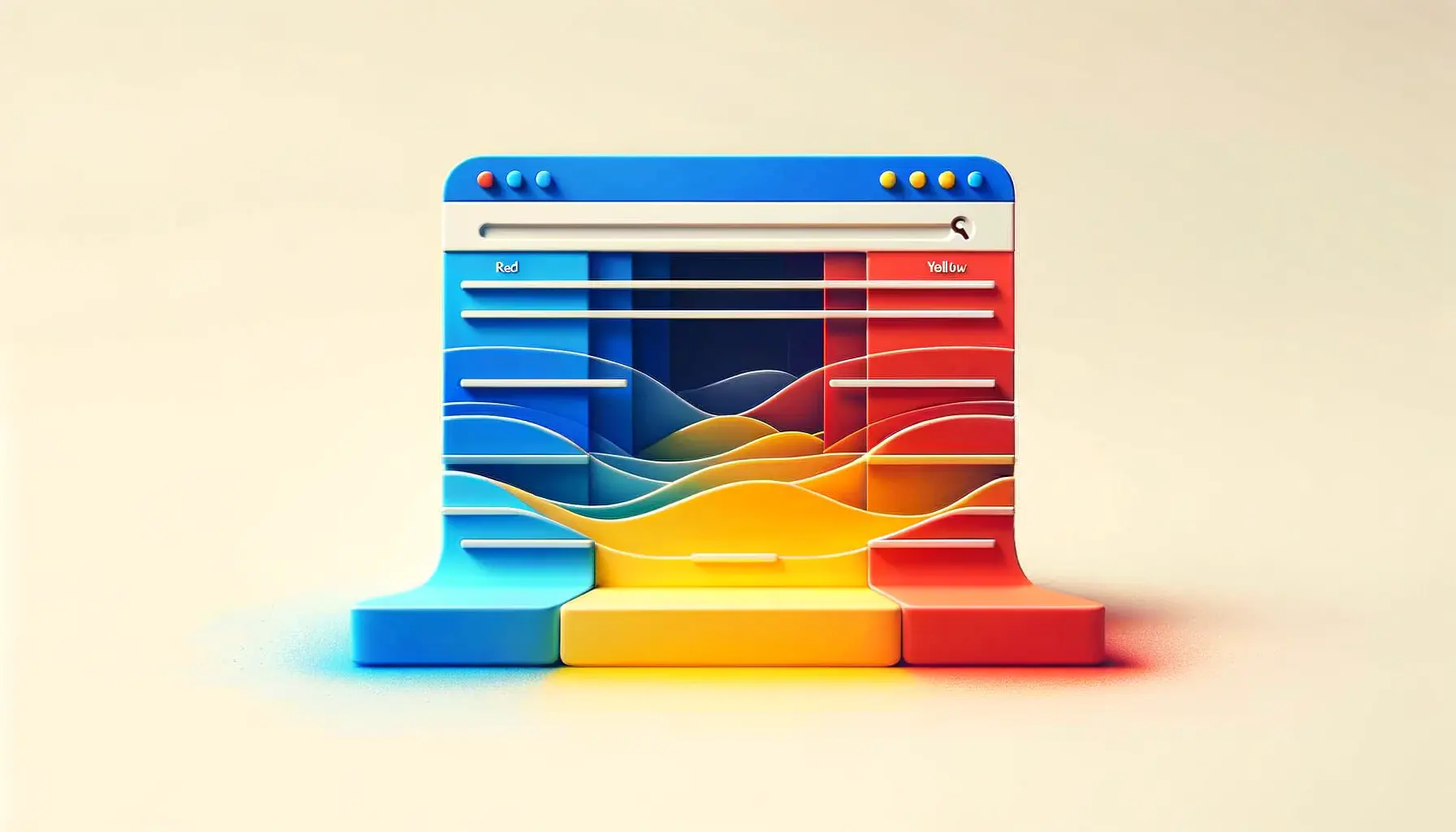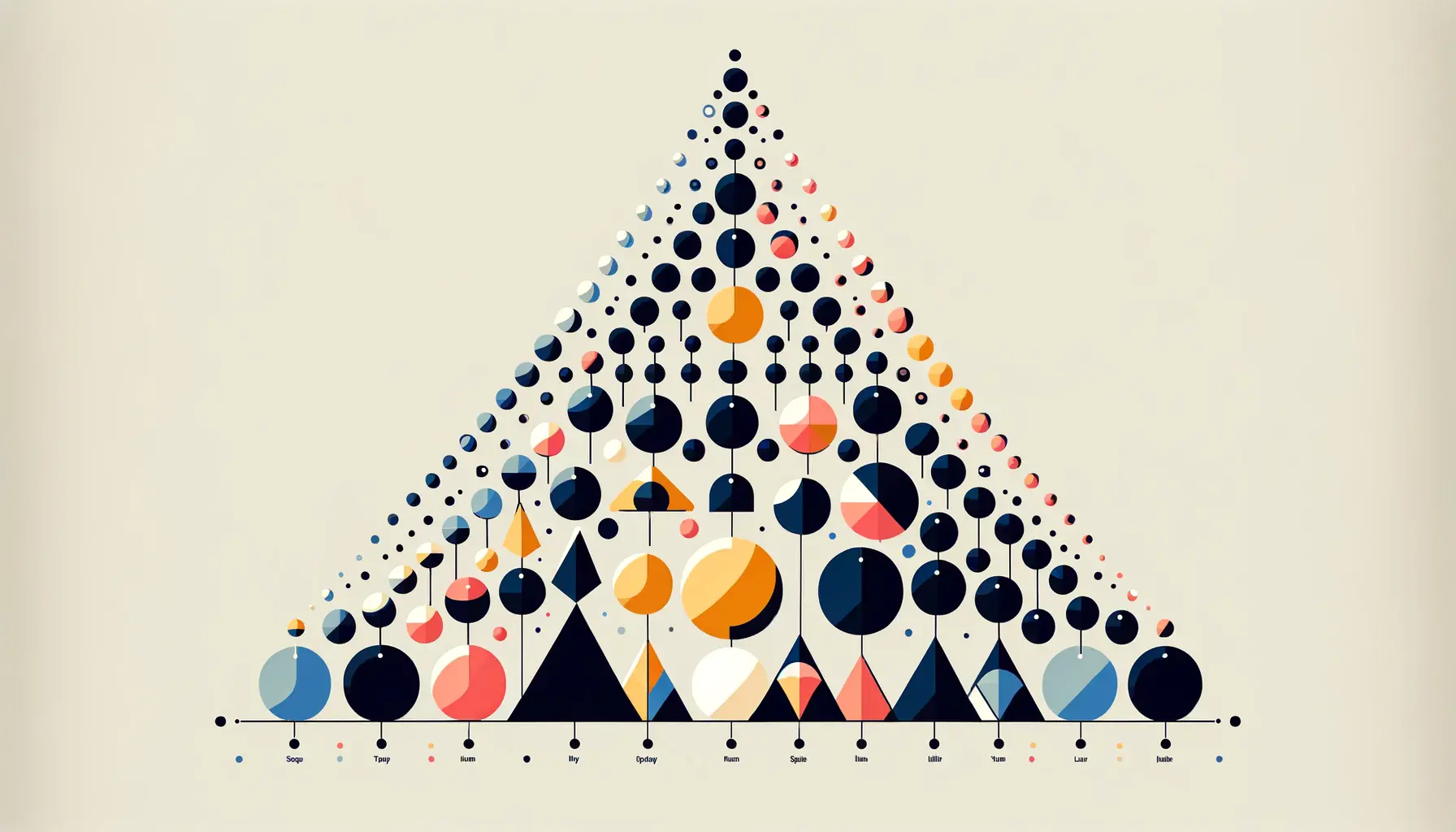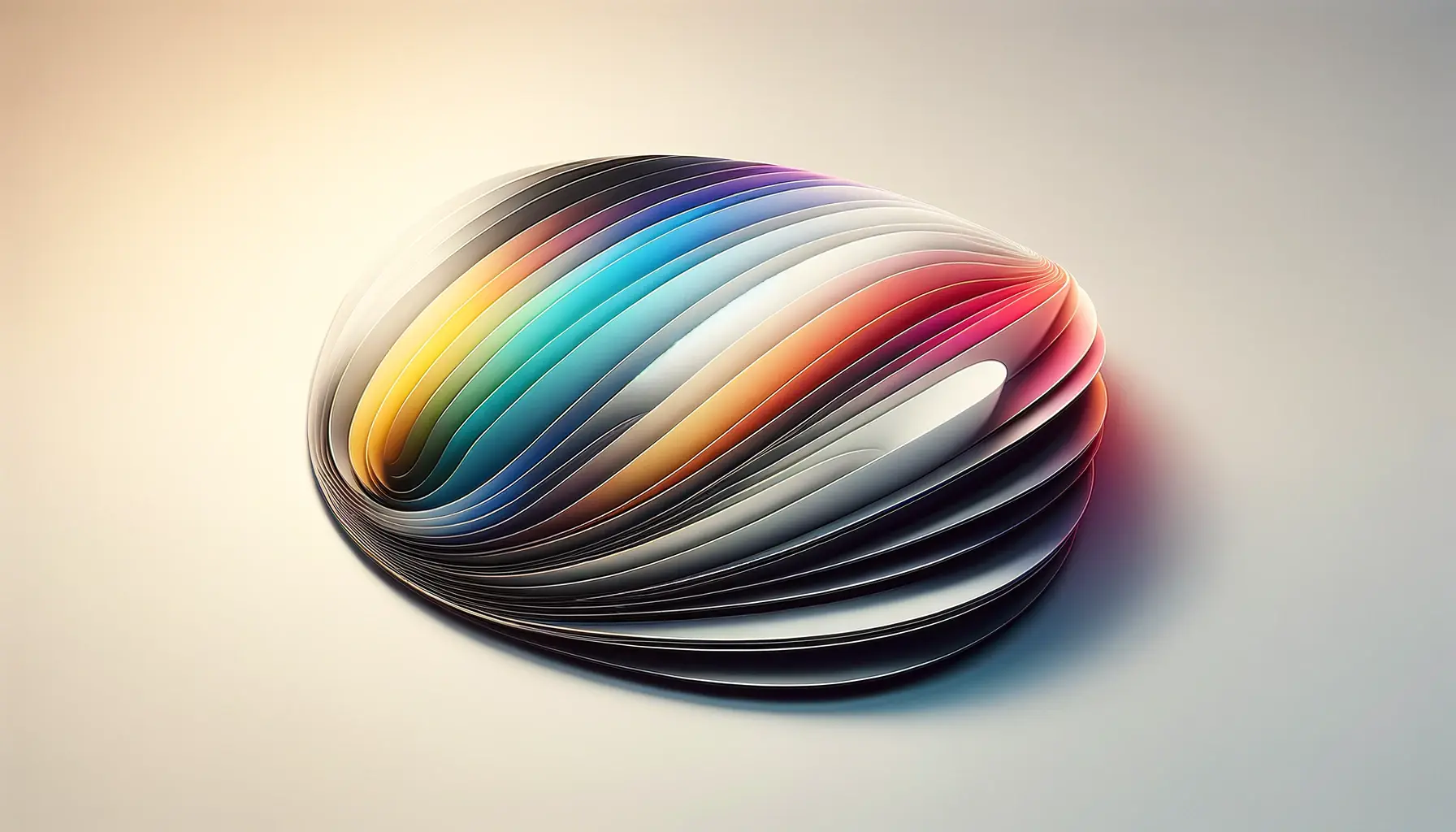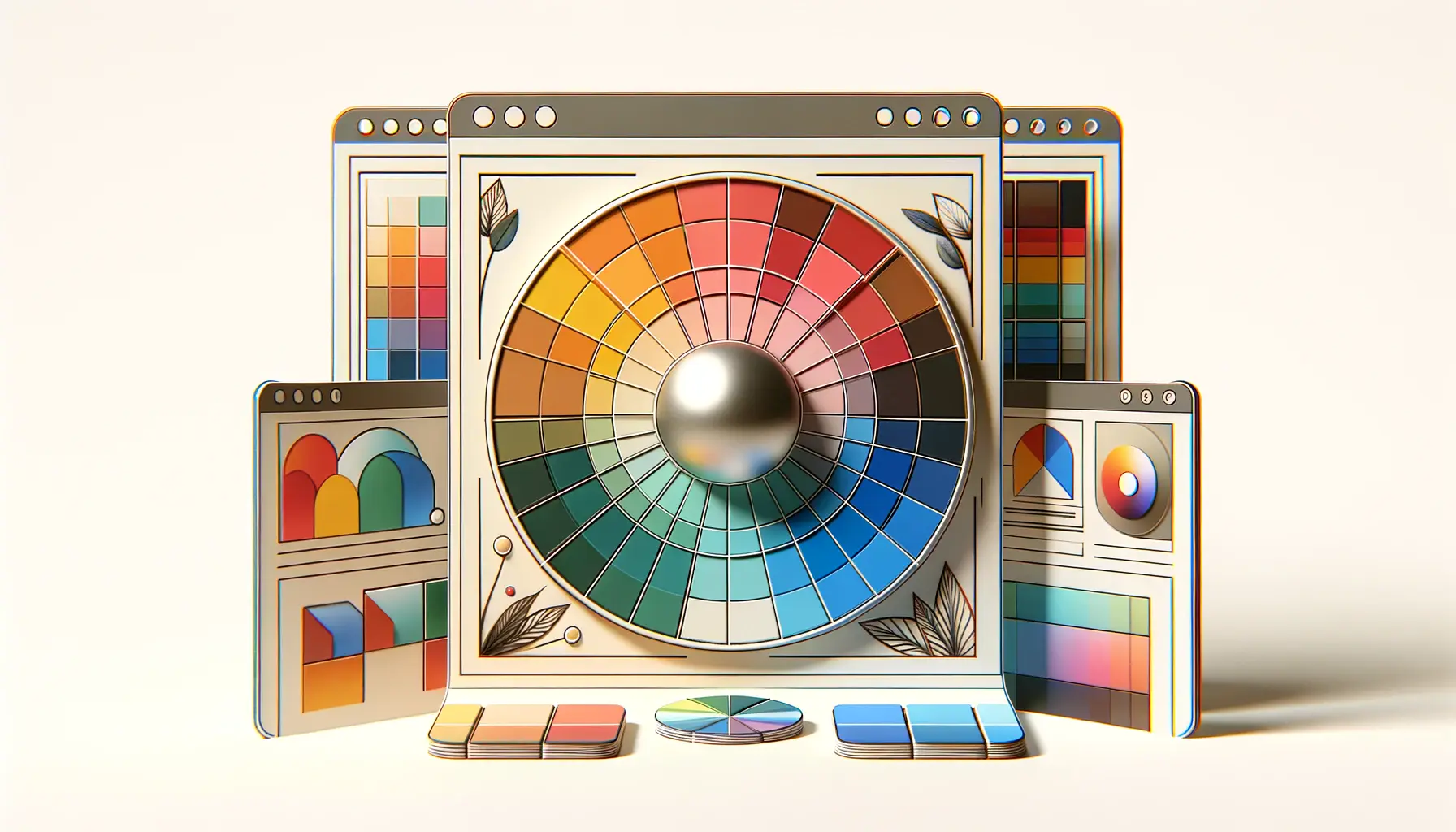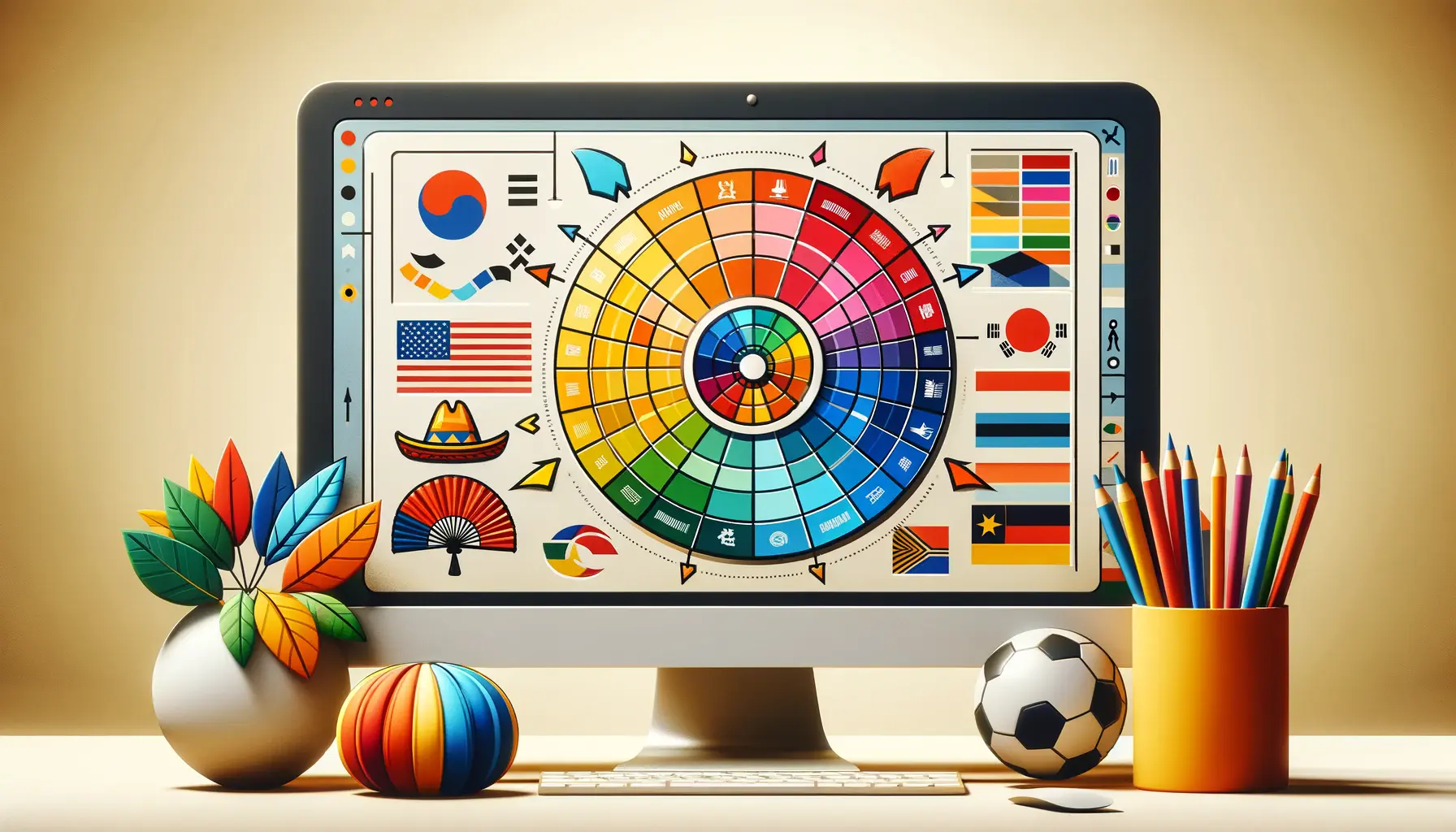The intersection of color psychology and web design is a fascinating frontier in the digital world, offering a unique blend of art and science that can significantly impact a website’s success.
The strategic use of color not only enhances the aesthetic appeal of a website but also influences user behavior, engagement, and ultimately, the return on investment (ROI) for businesses.
In this comprehensive exploration, we delve into the economics of color in web design, highlighting how thoughtful color choices can drive profitability and user satisfaction.
Understanding the economics behind color usage in web design requires a deep dive into color theory, user psychology, and market trends.
Colors are not just visual elements; they are powerful communication tools that convey messages, evoke emotions, and affect decision-making processes.
By leveraging the psychological effects of colors, web designers can create more effective and persuasive websites that align with their brand’s goals and user expectations.
- Understanding Color Psychology in Web Design
- Maximizing ROI with Color Strategies
- Color Trends and Web Design
- Color and User Experience (UX) Design
- Accessibility and Inclusion in Color Design
- Color Optimization for Mobile and Web Applications
- Integrating Color with Overall Web Design Strategy
- Conclusion: The Transformative Power of Color in Web Design
- FAQs: The Economics of Color in Web Design
Understanding Color Psychology in Web Design
Color psychology plays a pivotal role in web design, influencing how users perceive and interact with a website.
Each color can trigger different emotions, actions, and reactions, making it crucial for designers to choose their color palette wisely.
For instance, blue is often associated with trust and reliability, making it a popular choice for financial institutions and social media platforms.
On the other hand, red can evoke feelings of urgency and excitement, which is why it’s frequently used for call-to-action buttons and sale announcements.
The impact of color psychology extends beyond mere aesthetic appeal.
It directly influences user engagement, conversion rates, and overall satisfaction.
A well-chosen color scheme can improve readability, reduce eye strain, and enhance the user’s overall experience on the site.
Additionally, color consistency across a website reinforces brand identity, making it more memorable and recognizable to users.
This strategic application of color psychology not only improves the user experience but also contributes to a higher ROI by boosting conversions and loyalty.
Choosing the Right Color Palette
Selecting the right color palette for a website is a critical decision that should align with the brand’s identity, target audience, and the emotional response the brand intends to evoke.
It’s essential to consider cultural connotations and the universal meanings of colors to ensure that the website resonates with its intended audience.
For example, green is often used to signify growth, health, and sustainability, making it an excellent choice for eco-friendly brands or health-related websites.
Moreover, the color palette should complement the content and functionality of the site, enhancing the overall user experience without overwhelming the senses.
A harmonious color scheme can guide users through the website, highlight important information, and facilitate navigation, leading to increased engagement and conversions.
Employing A/B testing to compare different color schemes can provide valuable insights into user preferences and behaviors, allowing designers to optimize the website’s color palette for maximum impact.
The strategic use of color in web design can significantly enhance user engagement, brand recognition, and profitability.
Maximizing ROI with Color Strategies
Implementing effective color strategies in web design is not just about making a site look attractive; it’s about leveraging color to achieve specific business objectives and maximize ROI.
The right color choices can significantly enhance a website’s effectiveness by improving user experience, increasing engagement, and driving conversions.
Here, we explore how to utilize color strategies to boost a website’s return on investment.
Incorporating Color into Call-to-Action (CTA) Buttons
CTA buttons are crucial elements on a website, guiding users towards desired actions, such as making a purchase, signing up for a newsletter, or downloading a resource.
The color of these buttons can dramatically affect their visibility and the user’s likelihood to click.
Consider the following strategies:
- Contrast and Visibility: Use colors that stand out against the website’s background to make CTA buttons more visible and appealing.
- Psychological Impact: Choose colors that evoke emotions aligned with the action you want users to take. For example, use red for urgency or green for a calming effect.
- Consistency: Maintain color consistency for similar actions across the website to help users quickly identify CTA buttons.
Enhancing User Experience with Color Schemes
The overall color scheme of a website plays a significant role in the user experience.
A well-designed color scheme can make a website not only more attractive but also more intuitive and user-friendly.
Consider these aspects:
- Harmony: Create a balanced and harmonious color scheme that enhances the aesthetic appeal of the website without overwhelming users.
- Accessibility: Ensure that color contrasts are strong enough to be accessible to users with visual impairments, improving usability for a wider audience.
- Emotional Connection: Use color schemes that reflect the brand’s personality and values, creating an emotional connection with the audience.
Building Brand Identity with Color
Color is a powerful tool for building and reinforcing brand identity.
Consistent use of brand colors across the website can enhance brand recognition and loyalty.
Key considerations include:
- Logo and Brand Colors: Incorporate your brand’s colors into the website design to reinforce brand identity.
- Memorability: Use distinctive color combinations that make your brand stand out and become more memorable to users.
- Cultural Sensitivity: Be aware of the cultural connotations of colors in your target market to ensure that your brand’s colors are perceived positively.
Optimizing a website’s color scheme for CTA visibility, user experience, and brand identity can significantly impact its ROI by enhancing user engagement and conversion rates.
Color Trends and Web Design
Staying abreast of color trends is crucial for web designers aiming to create modern and engaging websites.
While the foundational principles of color psychology remain constant, the preferences and associations of users can evolve over time, influenced by cultural shifts, technological advancements, and global events.
Incorporating contemporary color trends can make a website feel current and relevant, potentially increasing its appeal to users and boosting engagement and conversions.
Adapting to Current Color Trends
Current color trends often reflect broader societal trends and consumer sentiments.
For instance, in times of uncertainty, people may gravitate towards colors that offer comfort and stability, such as earth tones or soft pastels.
Conversely, periods of optimism and growth might see a preference for bold and vibrant colors.
To leverage these trends:
- Research and incorporate colors that resonate with the current mood and preferences of your target audience.
- Use trend-forward colors in elements that are easy to update, such as backgrounds and accent details, to keep your website looking fresh.
- Balance trendy colors with timeless hues to ensure your website doesn’t become dated too quickly.
Technological Influences on Color Usage
Advancements in screen technology and digital media can also influence color trends and preferences.
High-definition displays and new web technologies enable more vibrant and varied color schemes.
To adapt to these technological influences:
- Experiment with high-saturation colors and gradients that look stunning on modern displays.
- Consider the impact of dark mode preferences on your color choices, ensuring your website remains visually appealing in both light and dark themes.
- Use CSS and web design tools that allow for dynamic color adjustments based on user preferences and system settings.
Forecasting Future Color Trends
Anticipating future color trends can give web designers a competitive edge, allowing them to create designs that feel ahead of their time.
While predicting trends is never an exact science, designers can look to industries such as fashion, interior design, and entertainment for early signals of changing color preferences.
Additionally, tools and reports from color authorities like Pantone can provide valuable insights into emerging color trends.
- Stay informed about the color of the year announcements and trend forecasts from reputable color authorities.
- Attend design and fashion events, and follow influential designers and trendsetters on social media to gather inspiration.
- Incorporate emerging colors in small, flexible website elements to test their effectiveness and appeal before making more significant changes.
Incorporating the latest color trends into web design can enhance a website’s relevance and appeal, but it’s important to balance trendiness with timeless design principles for lasting impact.
Color and User Experience (UX) Design
The role of color in UX design cannot be overstated.
It goes beyond mere decoration, deeply influencing how users interact with and perceive a website.
Effective use of color can improve usability, guide user behavior, and enhance the overall experience.
By understanding and applying the principles of color psychology and UX design, web designers can create more intuitive and engaging websites.
Improving Usability with Color
Color can significantly enhance the usability of a website by distinguishing between different elements, indicating functionality, and guiding users through the site’s content and interactions.
To improve usability with color:
- Use contrasting colors for text and backgrounds to ensure readability.
- Employ color coding to differentiate between types of information or interactive elements, making the site more intuitive.
- Highlight key navigation elements with distinct colors to help users find their way around the site more easily.
Guiding User Behavior with Color
Colors have the power to influence user behavior and decision-making.
By carefully selecting colors for different elements and sections of a website, designers can subtly guide users towards desired actions.
Strategies include:
- Choosing warm, vibrant colors for call-to-action buttons to make them stand out and encourage clicks.
- Using calming colors in areas requiring thoughtful engagement or input, such as contact forms or surveys.
- Highlighting promotions or special offers with eye-catching colors to draw user attention.
Enhancing Emotional Engagement with Color
The emotional impact of color plays a crucial role in how users feel about a website and, by extension, the brand it represents.
A well-thought-out color scheme can evoke positive emotions, create a sense of brand identity, and foster user loyalty.
To enhance emotional engagement:
- Select a primary color palette that reflects the brand’s personality and values, creating an emotional connection with the audience.
- Incorporate shades and tints of the primary colors to add depth and interest without overwhelming the user.
- Consider the emotional and cultural connotations of colors in your target market to ensure they align with the desired brand perception.
Effective color usage in UX design improves site usability, guides user behavior, and enhances emotional engagement, leading to a more satisfying user experience and higher conversion rates.
Accessibility and Inclusion in Color Design
Accessibility and inclusion are critical considerations in modern web design, ensuring that websites are usable and enjoyable for all users, including those with visual impairments or color blindness.
Color choices play a significant role in this aspect, affecting the readability, navigability, and overall user experience of a website.
By adopting accessible color design practices, web designers can create more inclusive digital environments.
Color Contrast for Readability
Ensuring sufficient contrast between text and background colors is essential for readability, especially for users with visual impairments.
To achieve accessible color contrast:
- Adhere to WCAG (Web Content Accessibility Guidelines) standards for color contrast ratios, aiming for at least a 4.5:1 ratio for normal text and 3:1 for large text.
- Use online tools and software to test color combinations for compliance with accessibility standards.
- Consider the use of bold or larger fonts to improve readability when high contrast cannot be achieved through color alone.
Designing for Color Blindness
Designing with color blindness in mind is crucial to ensure that all users can navigate and understand your website without confusion.
Strategies for accommodating color blindness include:
- Avoiding color combinations that are commonly problematic for color-blind users, such as red/green or blue/purple.
- Using textures or patterns in addition to color to differentiate elements, ensuring that information is not conveyed by color alone.
- Providing alternative text descriptions for important visual elements and ensuring that interactive elements are clearly distinguishable without relying on color.
Inclusive Color Palettes
Creating an inclusive color palette means considering the diverse ways in which users perceive and interact with color.
Inclusive design practices for color palettes include:
- Selecting a broad range of colors that can be easily distinguished by users with various types of color vision.
- Incorporating feedback from a diverse group of users during the design process to identify potential issues with color perception.
- Ensuring that color is not the sole means of conveying information, providing clear labels, and using multiple indicators (such as icons or text) to improve understanding.
Adopting accessible and inclusive color design practices not only complies with legal and ethical standards but also expands your website’s reach and usability, enhancing the experience for all users.
Color Optimization for Mobile and Web Applications
In the era of mobile-first design, optimizing color schemes for mobile and web applications is paramount.
The small screen sizes, varying lighting conditions, and diverse device capabilities present unique challenges and opportunities for using color effectively.
A well-optimized color scheme can enhance readability, user engagement, and aesthetic appeal across devices, contributing to a cohesive and enjoyable user experience.
Adapting Colors for Small Screens
Mobile devices’ small screens require careful consideration of color usage to ensure readability and ease of navigation.
To adapt colors for small screens:
- Choose high-contrast color combinations to enhance readability under different lighting conditions.
- Limit the number of colors used to avoid overwhelming the user and to keep the interface clean and focused.
- Use bold and saturated colors sparingly to draw attention to important elements without causing visual fatigue.
Ensuring Consistency Across Devices
Maintaining color consistency across different devices and screen types is crucial for a seamless user experience and brand recognition.
To ensure consistency:
- Test your color scheme on various devices and under different lighting conditions to ensure it performs well across scenarios.
- Consider the color calibration and gamut of different screens, adjusting your palette to look good on both high-end and older devices.
- Use responsive design techniques to adjust color saturation and brightness based on the device’s capabilities and settings.
Optimizing for Dark Mode
With the increasing popularity of dark mode settings on both mobile and desktop devices, optimizing your color scheme for dark mode is essential.
To optimize for dark mode:
- Develop a complementary color palette for dark mode that reduces brightness without losing contrast and readability.
- Test interactive elements like buttons and links in both light and dark modes to ensure they remain visible and attractive.
- Provide users with the option to switch between modes, remembering their preferences for future visits to enhance the user experience.
Neglecting color optimization for mobile and web applications can lead to poor user experiences, especially on smaller screens and in varying lighting conditions.
Integrating Color with Overall Web Design Strategy
Color is not an isolated element of web design but a crucial component that interacts with layout, typography, imagery, and content to create a cohesive and effective online presence.
Integrating color with the overall web design strategy requires a holistic approach, ensuring that all elements work together harmoniously to support the site’s goals and enhance the user experience.
Harmonizing Color with Layout and Typography
The relationship between color, layout, and typography is foundational to effective web design.
To harmonize these elements:
- Ensure that your color choices complement and enhance the readability of your typography, considering font color, background color, and font size.
- Use color to create visual hierarchy and flow within your layout, guiding users’ attention to key sections and actions.
- Balance vibrant or bold colors with ample whitespace to prevent the design from becoming overwhelming or cluttered.
Aligning Color Choices with Brand Identity
Color is a powerful tool for conveying brand identity and values.
Aligning your color choices with your brand identity involves:
- Choosing a primary color palette that reflects your brand’s personality and resonates with your target audience.
- Consistently using your brand colors across all digital and physical touchpoints to reinforce brand recognition and loyalty.
- Adapting your color scheme for different contexts and platforms while maintaining the essence of your brand identity.
Using Color to Enhance Content and Imagery
Color can significantly impact the effectiveness of content and imagery on a website.
To use color to enhance these elements:
- Select background and accent colors that improve the visibility and impact of your images and content.
- Use color to differentiate content types or sections, making the site more navigable and engaging.
- Incorporate color in infographics, charts, and callouts to highlight important information and make data more accessible.
Integrating color with the overall web design strategy enhances the site’s aesthetic appeal, usability, and effectiveness.
By considering color in the context of layout, typography, brand identity, and content, designers can create more engaging and cohesive websites that resonate with users and achieve business objectives.
Conclusion: The Transformative Power of Color in Web Design
The journey through the economics of color in web design reveals its profound impact on user experience, brand perception, and ultimately, the return on investment (ROI).
Color is not merely an aesthetic choice; it is a strategic tool that, when wielded with precision and understanding, can significantly influence the success of a website.
The integration of color psychology, accessibility considerations, and mobile optimization strategies underscores the multifaceted role color plays in creating engaging, effective, and inclusive digital environments.
Key Takeaways on Maximizing ROI with Color
Our exploration has illuminated several key strategies for leveraging color to enhance web design and maximize ROI:
- Understanding and applying color psychology to evoke the desired emotional responses and actions from users.
- Adopting accessible color design practices to ensure inclusivity and broaden the website’s appeal.
- Staying attuned to color trends and technological advancements to keep the website current and engaging.
- Optimizing color schemes for mobile devices to provide a seamless user experience across all platforms.
- Harmonizing color with layout, typography, and imagery to create a cohesive and strategic web design.
In conclusion, the economics of color in web design encompasses far more than the initial visual impact.
It involves a deep understanding of how color influences user behavior, supports brand identity, and enhances the overall effectiveness of a website.
By thoughtfully integrating color with the overall web design strategy, designers and businesses can create websites that not only captivate and engage users but also drive conversions and achieve a higher ROI.
As we move forward in the digital age, the role of color in web design will undoubtedly continue to evolve, offering new opportunities and challenges for maximizing its economic impact.
Quality web design is key for a great website! Check out our service page to partner with an expert web design agency.
FAQs: The Economics of Color in Web Design
Explore common questions about leveraging color in web design to enhance user experience and maximize ROI.
Color psychology in web design affects user emotions and behaviors, guiding their interactions and responses to the website.
Colors like red, green, and orange are effective for CTA buttons, influencing urgency, positivity, and action, respectively, to boost conversions.
Using high-contrast color schemes and considering color blindness can make websites more accessible and user-friendly for everyone.
Yes, consistent use of brand colors across a website can enhance brand recognition and influence how users perceive the brand’s identity.
Color in mobile web design enhances readability, focuses attention, and creates a cohesive look across various devices and screen sizes.
Designers can follow design publications, attend industry events, and use tools like Pantone for insights into emerging color trends.
The 60-30-10 rule suggests using a primary color for 60% of the space, a secondary color for 30%, and an accent color for 10%.
Economic climates can shift color preferences, with users gravitating towards colors that reflect current societal moods and trends.
